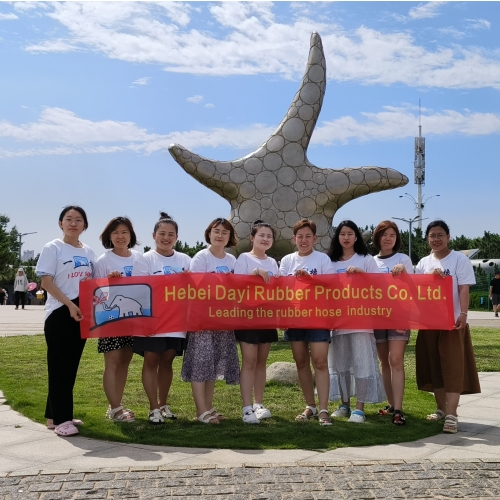335345435
Oct . 12, 2024 07:41 Back to list
China SAE 100R14 Hose Specifications and Applications for Fluid Transfer Systems
Understanding the China SAE 100R14 Standard A Comprehensive Overview
The hydraulic hose market has seen remarkable growth and innovation, leading to the establishment of various standards that ensure safety, quality, and performance. Among these, the China SAE 100R14 standard has gained significance, particularly in the realm of fluid conveyance applications. This article aims to elaborate on the SAE 100R14 standard, its specifications, applications, and importance in modern industrial practices.
What is SAE 100R14?
SAE 100R14 is a standard established by the Society of Automotive Engineers (SAE) specifically for hydraulic hoses. It is particularly relevant to hoses that are designed to convey hydraulic fluids, including those that operate under high pressure. The 100 indicates that the hose is indeed a part of the 100 series, while R14 specifies that this is a particular type of hose designed for high-temperature and corrosive fluid applications.
The standard outlines the manufacturing processes, material specifications, performance requirements, and testing methods for hoses classified under this category. Typically, hoses conforming to SAE 100R14 are constructed from polytetrafluoroethylene (PTFE) or similar materials, making them ideal for conveying a wide range of fluids in various industrial applications.
Key Specifications of SAE 100R14
1. Construction Hoses made under the SAE 100R14 standard generally have a PTFE inner tube and can either be reinforced with a single or multiple layers of stainless steel wire braid. This construction allows for high flexibility and resistance to high temperatures and pressure. 2. Temperature Range The hoses can typically handle temperature ranges from -65°F to +450°F (-54°C to +232°C), making them suitable for diverse environmental conditions.
3. Pressure Ratings SAE 100R14 hoses have varying pressure ratings, often up to 2500 PSI, which makes them essential for applications where high pressure is a factor.
4. Compatibility One of the showstopping features of SAE 100R14 hoses is their compatibility with a wide array of fluids, including acids, solvents, and various chemicals, thanks to their corrosion-resistant material.
china sae100r14

Applications of SAE 100R14 Hoses
SAE 100R14 hoses find extensive use in a multitude of industries due to their durability and versatility. Common applications include
- Aerospace Utilized in hydraulic systems for both commercial and military aircraft. - Automotive Ideal for fuel and fluid transfer lines in high-performance vehicles. - Chemical Processing Transporting corrosive fluids safely without risk of degradation. - Food and Beverage Some variants of PTFE hoses are certified for food-grade applications, ensuring safety and compliance with health standards.
Importance of Compliance with SAE 100R14
Adhering to the SAE 100R14 standard is crucial for manufacturers and operators alike for several reasons. First and foremost, compliance ensures that the hoses will perform safely and reliably under stipulated conditions, minimizing the risk of catastrophic failures that could lead to costly downtime or accidents.
Moreover, consumers often seek products that meet recognized industry standards, which can enhance marketability and trustworthiness. Organizations often consider SAE certification as a benchmark for quality, making it easier for suppliers to establish credibility in a competitive landscape.
Conclusion
In summary, the China SAE 100R14 standard embodies a critical aspect of hydraulic hose production and application. Its established specifications pave the way for enhanced safety, reliability, and efficiency in numerous applications across a variety of industries. As technology continues to evolve, it is vital for manufacturers to remain informed about standards like SAE 100R14 to ensure they are providing the best possible products for their clients’ needs.
-
SAE 100 R17 Black Smooth Cover Hydraulic Hose
NewsMar.07,2025
-
SAE 100 R17 Black Smooth Cover Hydraulic Hose
NewsMar.07,2025
-
SAE 100 R17 Black Smooth Cover Hydraulic Hose
NewsMar.07,2025
-
SAE 100 R17 Black Smooth Cover Hydraulic Hose
NewsMar.07,2025
-
SAE 100 R17 Black Smooth Cover Hydraulic Hose
NewsMar.07,2025
-
steel wire braided hydraulic hose
NewsMar.07,2025



